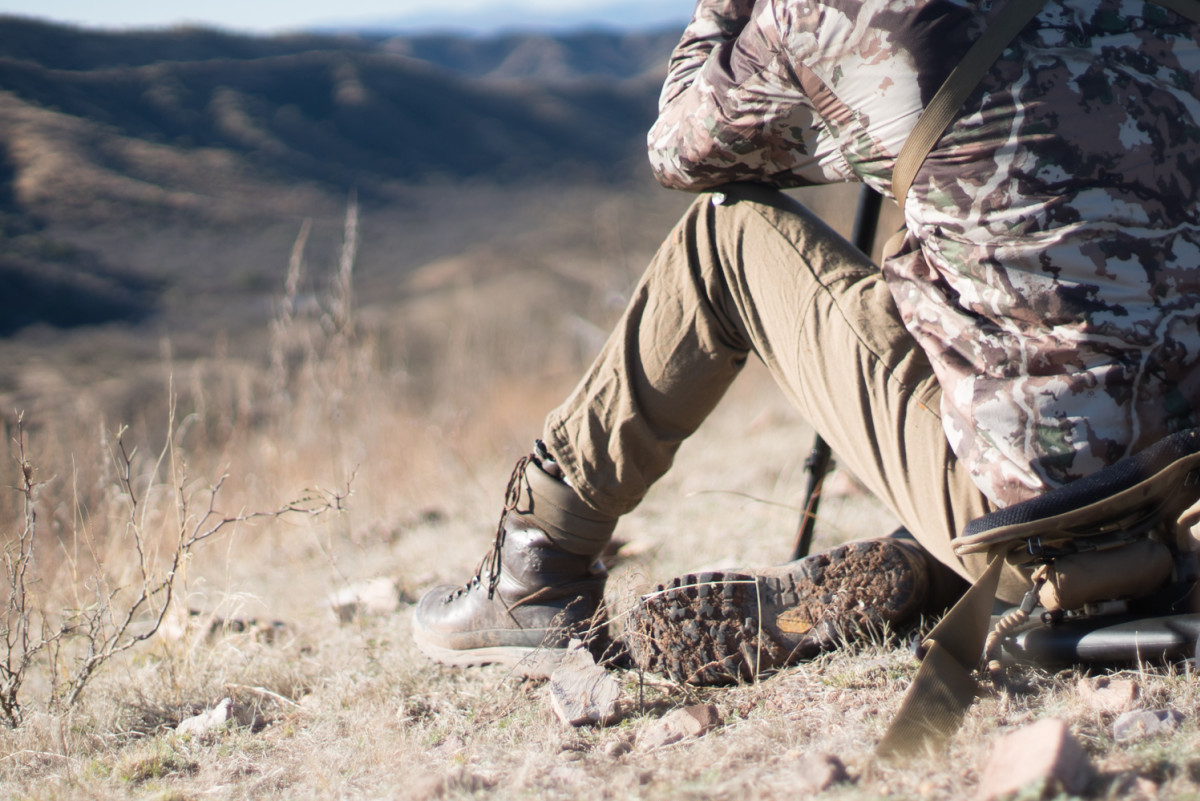
Choosing the right hunting boot is one of the most important gear-oriented decisions a hunter can make. We’ve said many times in the past that the thing we see ruining or even ending hunts most often are foot problems. A good hunting boot needs to provide ample support and traction, keep your feet warm and dry, and stand up to rugged terrain and the elements, all while fitting well and remaining comfortable for days on end. When boots don’t do these things, they inevitably become a liability. Problems such as painful blisters and hot spots, cold and wet feet, or even twisted ankles can turn a fun hunt into a miserable death march.
The best hunting boots are based on the best hiking and mountaineering platforms, and should last a hunter at least several years with proper care. And as long as they fit well, good boots eliminate the most severe complications hunters commonly encounter while wearing inadequate footwear. But how you choose the ideal hunting boot depends largely on where, when, and how you’ll be hunting. Among other things, you’ll need to consider the terrain, average temperatures, and the level of support you might need.
In certain cases, the environment or weather might require specialty footwear. For instance, a hunter chasing wild pigs in a swampy environment might need knee-high rubber or neoprene boots. But the vast majority of big and small game hunting can be done with just one or two pairs of high-quality, sturdy leather hunting boots like those made by Schnee’s. Each model is hand-crafted and outfitted with signature Schnee’s features. Their Easy Roller lacing system ensures a custom fit. Superior leather and a full wrap-around rubber rand provide years of durability. The waterproof OutDry membrane keeps your feet dry in snowy or rainy conditions. Dual-density midsoles cushion your feet against constant pounding, and the sturdy Vibram rubber soles are designed for maximum traction. We’ve worn Schnee’s everywhere from the farm country of Wisconsin to the high country of Alaska and they’ve never let our feet down.
The Timberline is Schnee’s newest model of hunting boot, but we’ve been running them for several months now. Steve and Janis tested them out in the rugged desert mountains of Mexico on a Coues deer hunt last winter and loved them. I wore them all spring while I chased Merriam’s gobblers around the mountains of Colorado. I’ve already put a lot of miles on my Timberlines in tough country and from a durability standpoint, they still look and feel brand new. But the most noticeable thing about the Timberlines is how light they are. At a pound lighter per pair than the average hunting boot, it feels like you’re hiking in a pair of ultralight trail running shoes. And they have quite a bit of flex which is nice on long, active hikes like you might undertake while stalking antelope or hunting pheasants. But despite their light weight and lower degree of stiffness, the Timberlines have plenty of stability and traction in steep terrain. I wouldn’t hesitate to wear them on a backcountry archery elk hunt. The boots are uninsulated, so they’re ideal for warmer environments or early-season hunts, but with a heavy pair of merino wool socks, they’ll work well later in the fall. The Timberline is a great all-purpose choice for hunters who prefer a softer, lighter boot, and like to cover a lot of ground.
For years, wherever we’ve hunted, the Beartooths have been the workhorse boot for the entire MeatEater crew. This year, Schnee’s revamped their Beartooth model and the Beartooth II is an even better all-purpose choice for hunters looking for a boot that will handle a wide range of weather and topography. A new upgraded chassis and midsole add even more support and cushioning and also extend the lifespan of the boot. The Beartooth II is a bit stiffer than the Timberline, which makes them a good choice for mountain hunting. But they’re not so stiff that long hikes on flat ground become painful. The Beartooth II is available in an uninsulated model and an insulated version. Most of the MeatEater crew prefers the uninsulated version, even on hunts later in the fall, but the added warmth of the insulated style is nice when you’re sitting for a long time in one spot glassing or stand hunting in cold conditions. Whether you’re looking to invest in your first high-quality, all-purpose pair of hunting boots or you finally wore out your original pair of Beartooths, you can’t go wrong with the Beartooth II.
The Granite, Schnee’s badass mountain hunting boot, also got an overhaul this year; the new Granite II features an enhanced dual-density midsole and rear foot stability system, along with a custom rubber Vibram Tsavo outsole that holds its grip in loose soil or on bare rock. The Granite II could be considered a “sheep hunting boot”, meaning it’s stiff and designed for maximum support, stability, and traction in the steepest mountain terrain. And, outfitted with 200 grams of Primaloft insulation, they’re great for mid to late-season hunts. I include the Granite II here because some hunters spend the majority of their time in mountainous backcountry environments where these features are essential, and also because the Granite II’s are my favorite hunting boots. I’ve got some old running injuries that sometimes cause my ankles to fold and roll over without notice, especially while sidehilling. The resulting unplanned diggers can be painful and even dangerous in some situations. For this reason, I prefer a stiff, stable boot. And for a mountain boot, they’re very comfortable too. I can hike in the Granite II’s all day without feeling like I’m wearing a pair of downhill ski boots. I’ve never drawn a sheep tag, but I do wear the Granite II’s while hunting dusky grouse, mule deer, and elk in the mountains of Colorado. And if I ever do get to hunt sheep, I’ll be wearing these boots. If you’re looking for a bombproof mountain hunting boot, check out Schnee’s Granite II.
Honorable Mention: Schnee’s Hunter II Pac Boots
Schnee’s got their start making pac boots in Bozeman, Montana thirty years ago. They still make them there today. A pac boot might not seem like an obvious choice for an all-purpose hunting boot at first, but for hunters in some parts of the country, these boots are almost a necessity. With a tough, vulcanized rubber bottom, they’re impervious to water. The removable, quilted Thinsulate wool liner is rated down to -20 degrees. So if you hunt in cold, wet environments, the Hunter II Pac Boot will keep your feet warm and dry. These were Steve’s favorite winter trapping boots in Michigan and they’re great for late-season hunts for everything from ruffed grouse to whitetails. But Schnee’s originally designed these boots for elk hunting and you’ll still see a lot serious elk hunters wearing them later in the season. Although they’re on the heavy side, the air bob sole provides good traction and the sturdy leather uppers and lacing system provide good support while hiking up and down hills. The Hunter II is available in 7, 10, 13, and 16-inch heights so you can pick the one that suits your needs best. I have the 13-inch version which is great for hunting in deep snow. And, if after many years of wear, you manage to beat these boots up enough that they need to be rebuilt, Schnee’s has you covered.
A Note on Boot Height
You’ll notice that we prefer a higher boot height of at least 9-10 inches rather than ankle high boots; there are a couple reasons for this. First, if you’re doing any amount of hiking, you’ll appreciate the extra support and stability of a higher boot. Next, the added height keeps out water, snow, dirt, and debris. I know a few hunters who still prefer lower, ankle-high hiking boots because they’re lighter and faster. These boots work fine in mild terrain or cruising down a trail. But inevitably, those hunters get wet feet during creek crossings or when a snowstorm rolls in without warning. In brushy areas, they’re constantly stopping to pick burrs out of their socks. And in uneven terrain, they can’t navigate steep sidehills as safely or easily as they would with higher boots. When in doubt, go with a higher boot height.

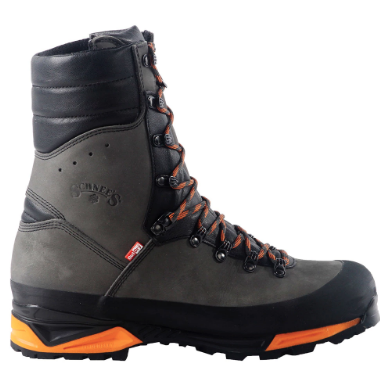
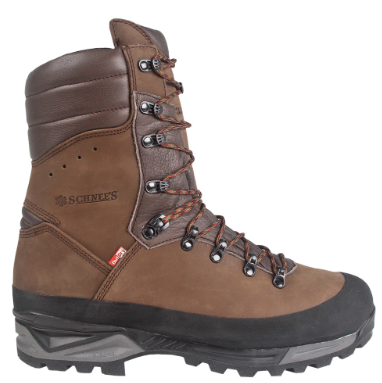
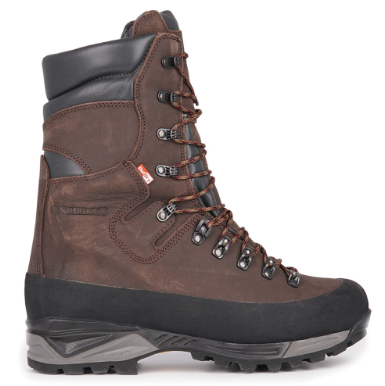




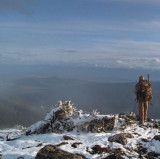
Conversation